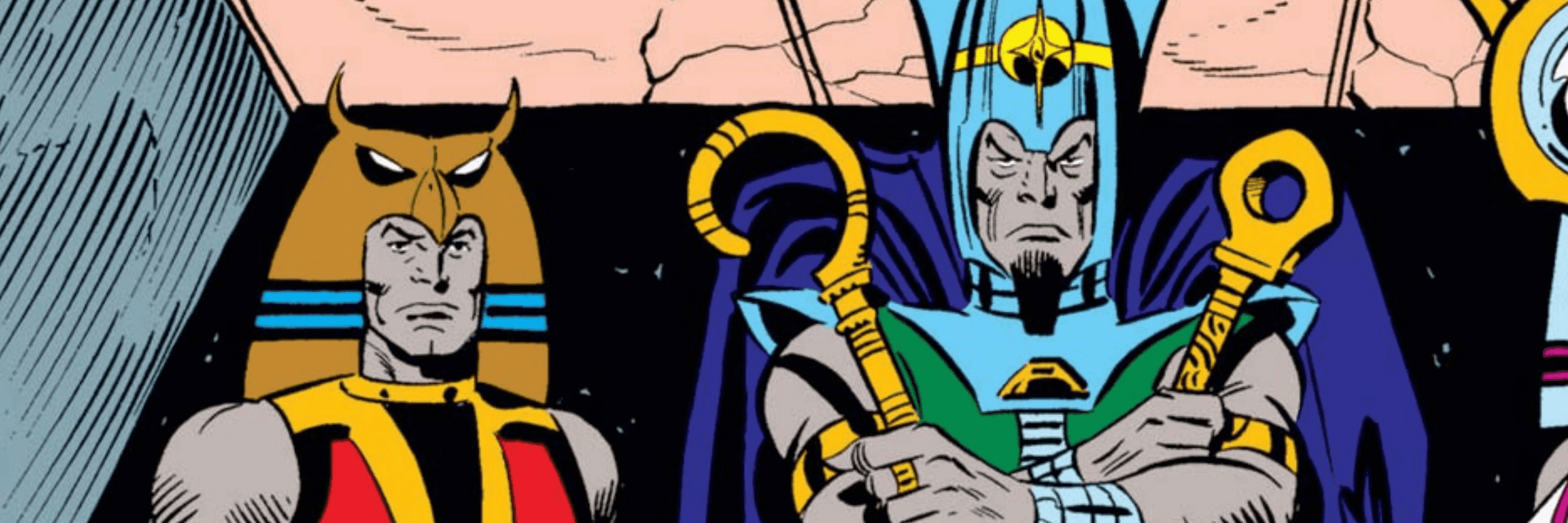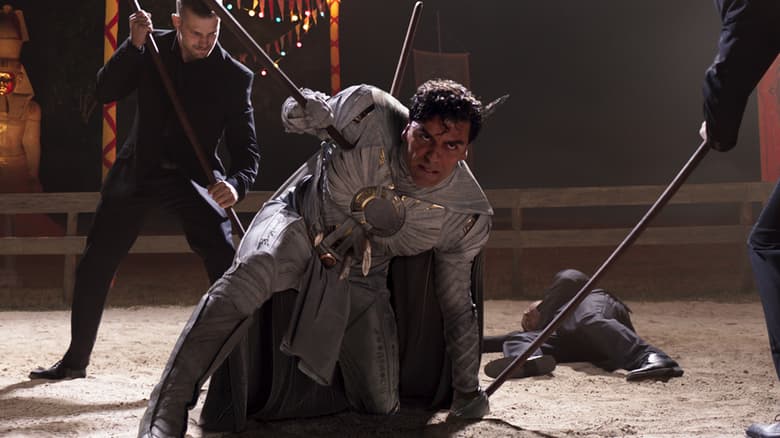Osiris, the benevolent God of the Dead, rules the city Heliopolis in Egypt until his brother Seth slays him, but thanks to efforts by his wife Iris and sons, he comes back to life to battle Seth for his crime.
Ancient Origin
Osiris is part of the next generation of Ennead following his parents the Sky Goddess Nut and Earth God Geb, who have an affinity for mountains and the Earth’s crust. Osiris is sibling to the Fertility Goddess Isis, the evil Seth and benevolent Death Goddess Nephthys, who protects female household heads. Following the end of the Hyborian age, circa 8000 BC, Seth poses as and usurped the worship of Set, establishing a large following in the pre-Egyptian civilization.
When Geb steps down, Osiris is chosen to succeed him as head of the pantheon, much to Osiris’ jealous younger brother Seth’s dismay, who seeks to rule Heliopolis himself. With Isis, Osiris fathers sun god Horus, and with Nephthys (who has no children with her husband, Seth), he fathers Anubis, god of funeral rites. Largely worshiped by the Nile River Valley’s inhabitants, the Ennead rule from the city Heliopolis (“City of the Sun”; also known as “Iunu,” near modern day Ain Shams, Egypt). At the same time, Chons, AKA Khonshu, poses as a human pharaoh in Thebes, where the people still worship Ra.
All-Powerful Deity
As an Ennead, Osiris possesses the superhuman abilities, including superhuman strength, speed, stamina, durability, and healing. He is also nearly immortal, unable to age after adulthood and cannot die by conventional means. He is resistant to conventional diseases and injury as well. Only dispersal of a major portion of an Ennead’s bodily molecules will cause death, and even then resurrection via other gods may be possible.
His flesh and bone are two and a half times denser than human tissue, and average gods and goddesses can lift about 30 and 25 tons, respectively, where Osiris can lift about 80-85 tons. He can also manipulate energy, able to fire blasts of it as an offensive and defensive weapon.
Familial Foes
Seeking to rule Earth and wanting revenge on Osiris for impregnating Seth’s wife Nephthys (a union that produced the god Anubis), Seth locks Osiris in a coffin and later scatters pieces of Osiris throughout all of Egypt, but Osiris’ sons, Anubis and Horus, resurrect their father with magic, and Horus spends the following centuries battling with Seth over this atrocity. Seth eventually defeats Horus and locks the god and both his parents in a giant pyramid, even as Egypt itself falls to Rome. With Osiris out of the way, his vizier Thoth succeeds him as ruler of Celestial Heliopolis while Seth plots to destroy the pantheon.
Family Ties and Allies
Osiris is closely allied with most of his family, other Ennead, such as his wife Isis and his sons Horus and Anubis. Osiris, Isis, and Horus manipulate Odin Borson, AKA Odin, into believing he was Ammon Ra and he liberates them from their imprisonment, allowing them to engage Seth’s legions of the Dead. Odin and his son the God of Thunder Thor Odinson, AKA Thor, defeat Seth.
An Ancient Egyptian History
During Osiris’ reign, he placed mortal pharaohs in charge of Heliopolis; Osiris taught humanity funeral rites, preparing the afterlife for his loyal worshippers, while Isis taught humanity, medicine and domestication. The gods eventually became less involved in mortal affairs and established a palace on a small planetary object in the extradimensional realm Celestial Heliopolis (known to the ancient Egyptians as Aaru), a small dimension adjacent to Earth. The nexus between Celestial Heliopolis and Earth is a golden bridge known as the Path of the Gods, which connects to Earth near the Giza Necropolis in modern-day Giza, Egypt.
Seth eventually murdered Osiris in his attempt to take control of Celestial Heliopolis, locking him in a coffin and later scattering pieces of him throughout Egypt. Isis, Nephthys, Horus and Anubis combined their powers to regather and resurrect Osiris, who then dispatched Horus to exact vengeance upon Seth. Horus engaged Seth in a cataclysmic battle lasting centuries, ending when Seth finally defeated Horus circa 31 BC. Seth sealed Osiris, Isis and Horus in a pyramid in Egypt, while Thoth ruled the Ennead during Osiris’ absence.
In recent years, the Asgardian Sky Father Odin freed Osiris, Isis and Horus. Imbuing Odin with the “Atum-Force,” the trio hoped to use him to defeat Seth. With the Asgardian Thor’s aid, Seth was defeated, his right hand disintegrated by Odin via the Atum-Force. Thoth relinquished the throne to Osiris upon his return to Celestial Heliopolis. Returning to Duat, Seth later sent Siapep the Devourer (spawn of Apep, a manifestation or aspect of Set) to slay Horus. Siapep proved too mighty to control, and Osiris defeated him with Thor and Ben Grimm, AKA the Thing’s aid. When most Asgardian gods were slain attacking the Celestials, Gaea appeased the Celestials by presenting the gathered humans (the Young Gods), and Osiris granted Thor life energies to resurrect the Norse pantheon.
After the Asgardian Sky Father Odin perished battling the demonic Surtur, Osiris attended a Council of Godheads that determined that Thor was not yet ready to replace his father on the Council. Both Horus and Osiris later represented the Ennead at a Council of Godheads, which was convened by the Olympian goddess Athena to address the threat of the Skrulls’ gods. Horus convinced his great-great-grandfather Atum, AKA Demogorge, to accompany a team of Earth-based gods on a preemptive assault on the Skrull gods, though Demogorge was destroyed during the mission.


